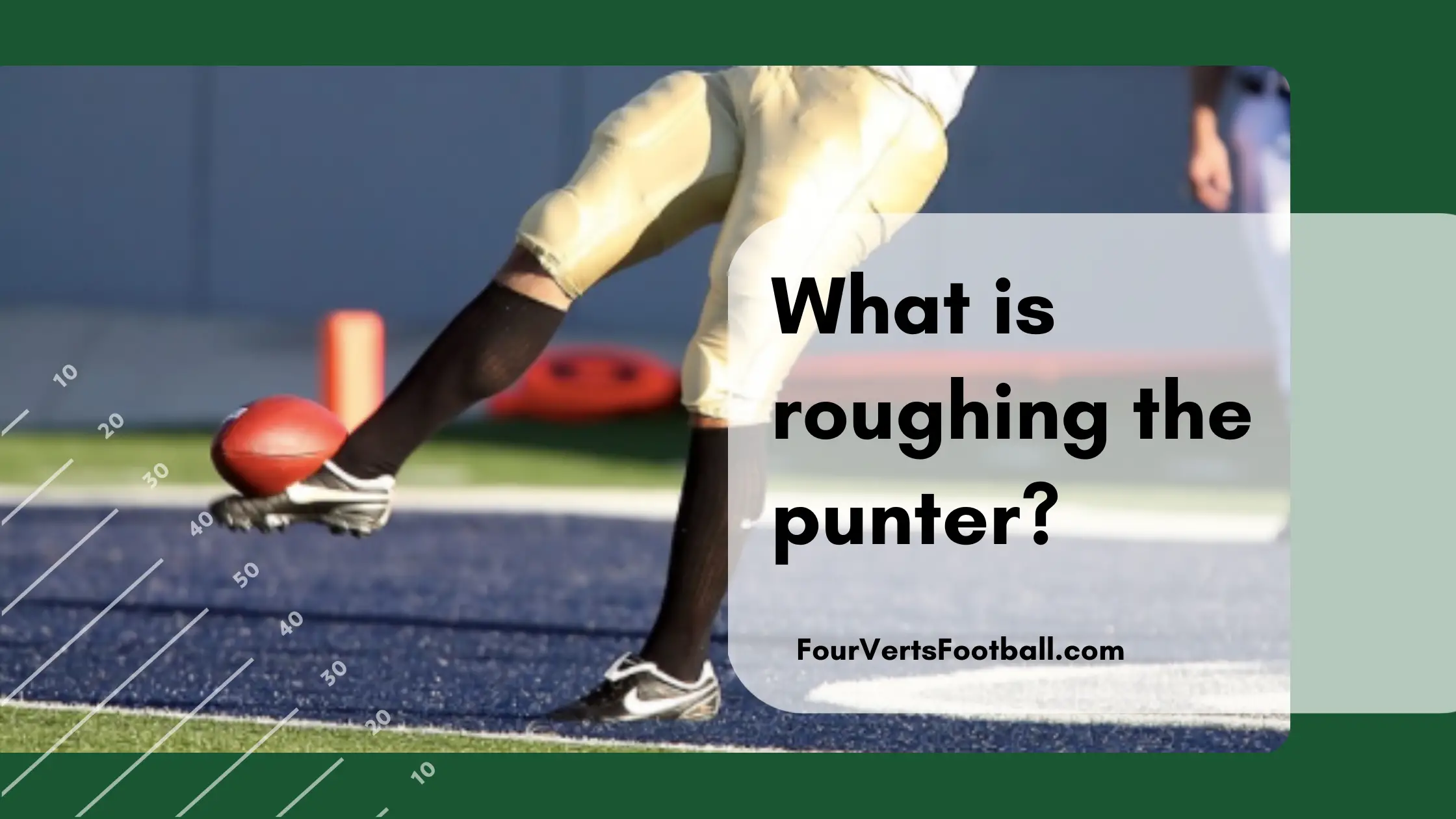The punter, just like the kicker has a series of rules put in place in order to protect them during the game. Throughout this article, we are going to break down these rules and penalties regarding roughing the punter.
Roughing The Punter = Roughing The Kicker
The first point we are going to cover in this article is that there is no actual penalty for roughing the punter. A penalty for hitting the punter is going to fit under the roughing the kicker rule.
There are two penalties a player can get when making contact with a punter those penalties are roughing the kicker and running into the kicker.
Running Into The Kicker
This penalty is called in two different situations. The first being when a defensive player contacts the kicking leg of the punter. This penalty will still be called even if the punter is airborne at the time of the contact.
The second situation that leads to a running into the kicker penalty is when a player goes underneath the punter and does not allow him to land both feet on the ground.
Roughing The Kicker
Roughing the kicker calls on punts are quite common. These plays also have major swings in the game as the offense will go from punting to gaining fifteen yards and a fresh set of downs.
Similar to running into the kicker this penalty has two different criteria that can cause a referee to throw a flag.
If a player contacts the pant leg of the punter while the kicking leg is in the air he will receive a roughing the kicker penalty.
Additionally, if a defensive player contacts the punter when both feet are on the ground he may earn a roughing the kicker penalty. In order for this penalty to be called the officials must determine that the contact was severe.
Roughing The Kicker vs Running Into The Kicker
The main difference between these two penalties is the danger they present to the punter. As you can see above running into the kicker involves hitting his kicking leg while in the air or not allowing him a place to land.
Both of these actions can cause injury but are far less dangerous than roughing the kicker criteria.
Roughing the kicker occurs when a defender contacts the planted leg of the kicker or severely hits a punter when both legs are on the ground.
When the punters planted leg is hit it can lead to serious injury this is because the punter is in a very awkward position when making the kick. His cleat being in the ground also makes the chance of injury increase.
Additionally, if you lay a severe hit on a punter you can almost always expect a roughing the kicker call as punters are not able to prepare themselves for big hits while punting.
When Is Roughing The Kicker Not Called?
Like most penalties, there are certain situations that will allow this penalty not to be called. Both roughing the kicker and running into the kicker have stipulations that can allow a defender to avoid penalty.
The stipulations are as follows:
- Incedental contact on the punter after the defender has touched the ball
- Caused by the punters own motions
- Occurs during a quick kick
- Occurs during or after a run behind the line
- Occurs after punter collects a bad snap
- The defender is pushed into the punter
This means that if you are able to get a hand on the ball all roughing the punter penalties are out the window. So long as your path is to the ball first and not the punter you will may be able to avoid the call.
If the punter is moving around behind the line of scrimmage this will also often result in defenders avoiding these penalties.
And of course, if a punt team player pushes a defender into the punter then the call should not be made.
Conclusion
I hope you have enjoyed this guide on penalties for hitting the punter in football. If you want to learn more about punts in football see our guides to understanding a pooch punt or if you can catch your own punt.

